Abstract
A strain of Pseudomonas aeruginosa has been shown to produce an enzyme that lyses viable cells of Staphylococcus aureus. The maximal yield of the enzyme was obtained from shake flask cultures of P. aeruginosa which were grown for 18 to 22 hr at 37 C in Trypticase Soy Broth. A 333-fold purification of the enzyme was obtained by acetone precipitation of the culture liquor, followed by column chromatography on phosphonic acid cellulose and Bio-Gel P2. The staphylolytic enzyme exhibited maximal activity at 37 C in 0.01 m sodium phosphate (pH 8.5) and was stable at 37 C in the pH range of 7.5 to 9.5. The inhibition and stabilization of the enzyme by various organic and inorganic materials was investigated. Spheroplasts of S. aureus were formed by treating viable cells with the staphylolytic enzyme in 1 m sucrose or human serum.
Full text
PDF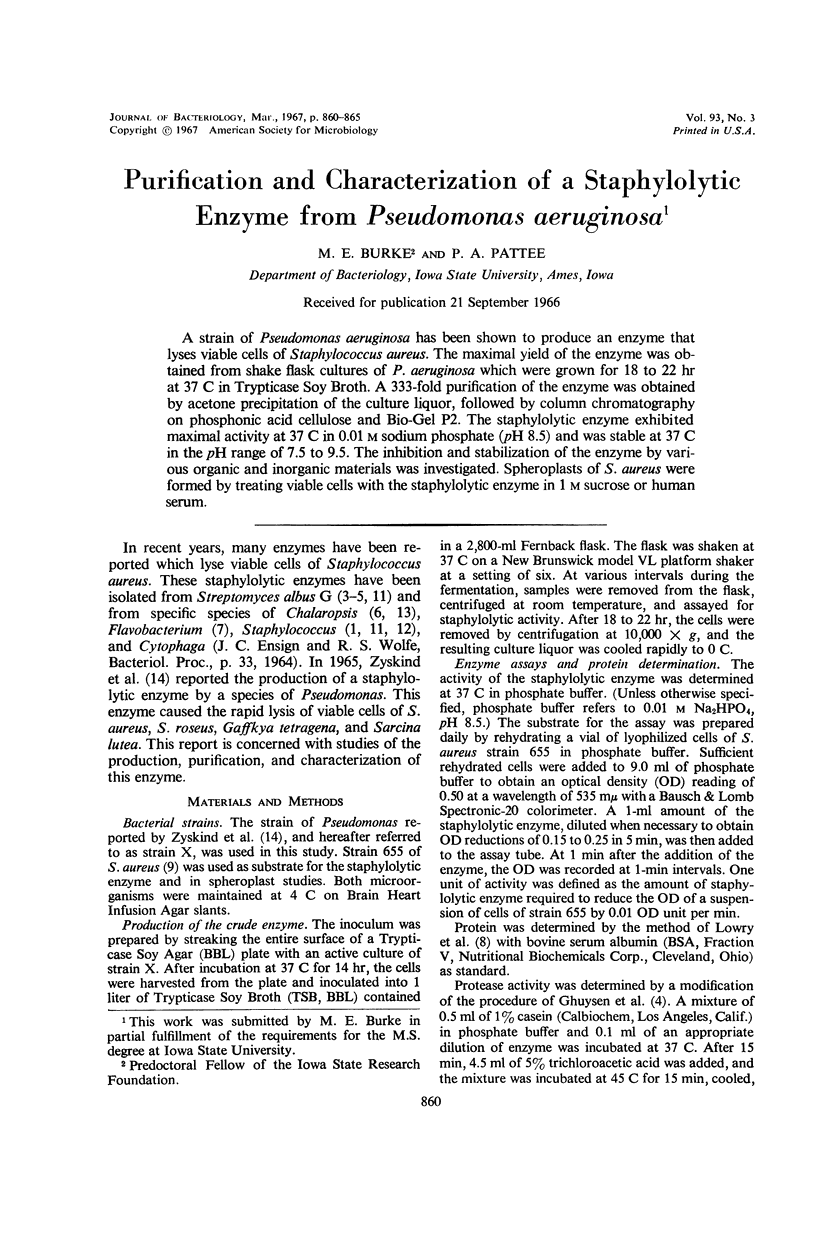
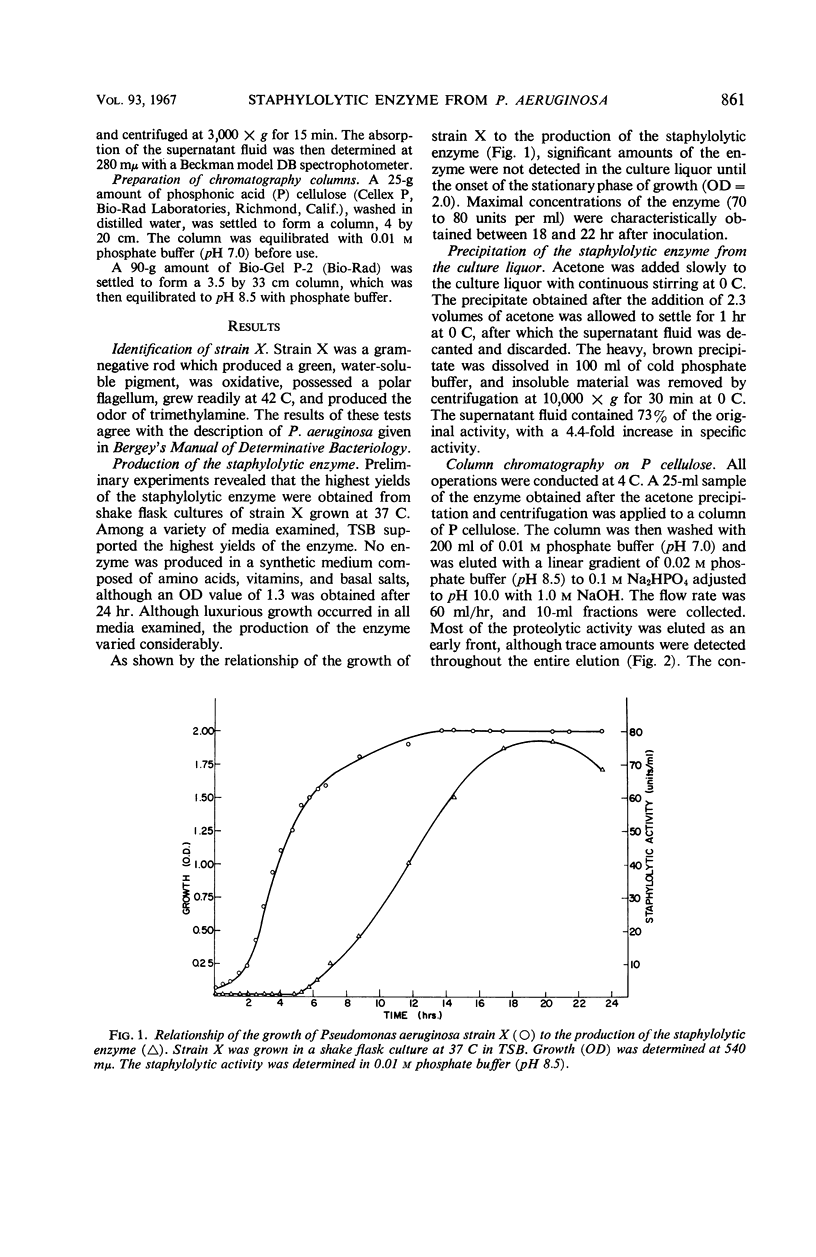
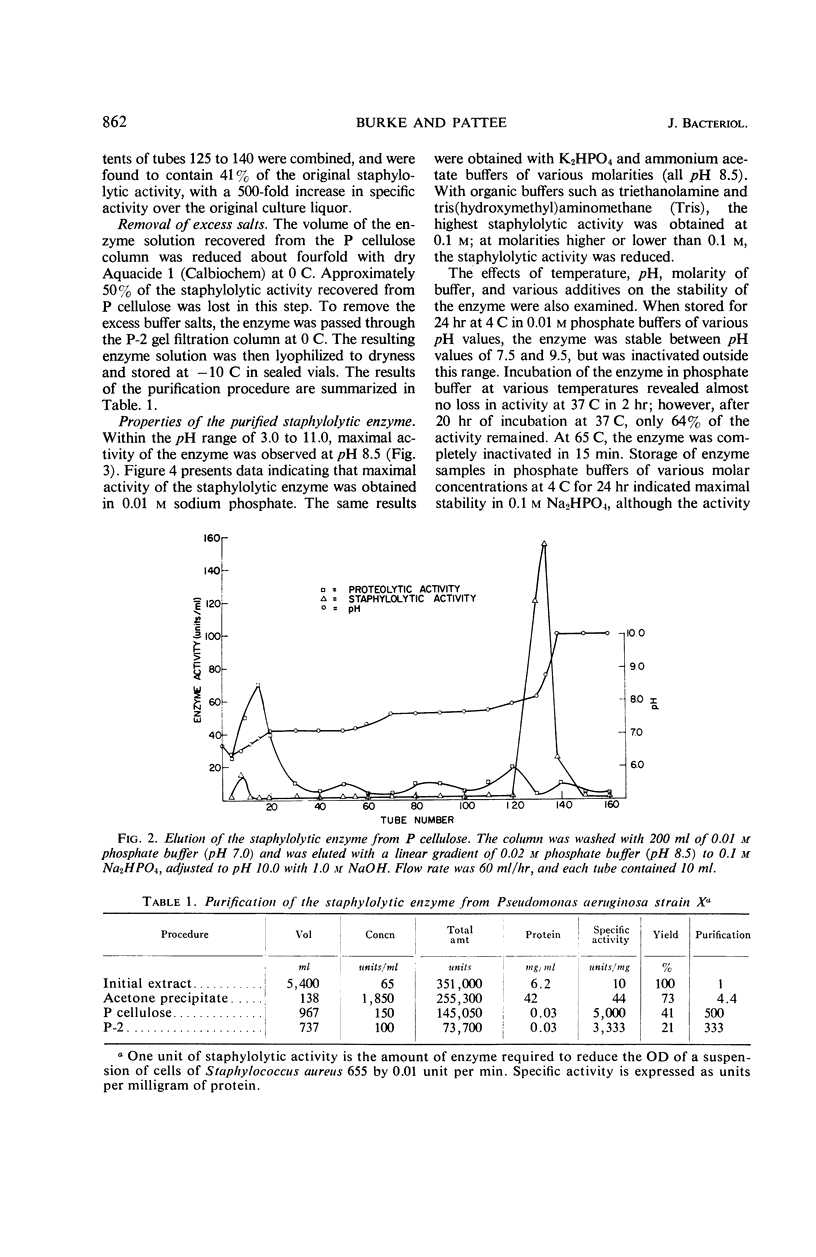
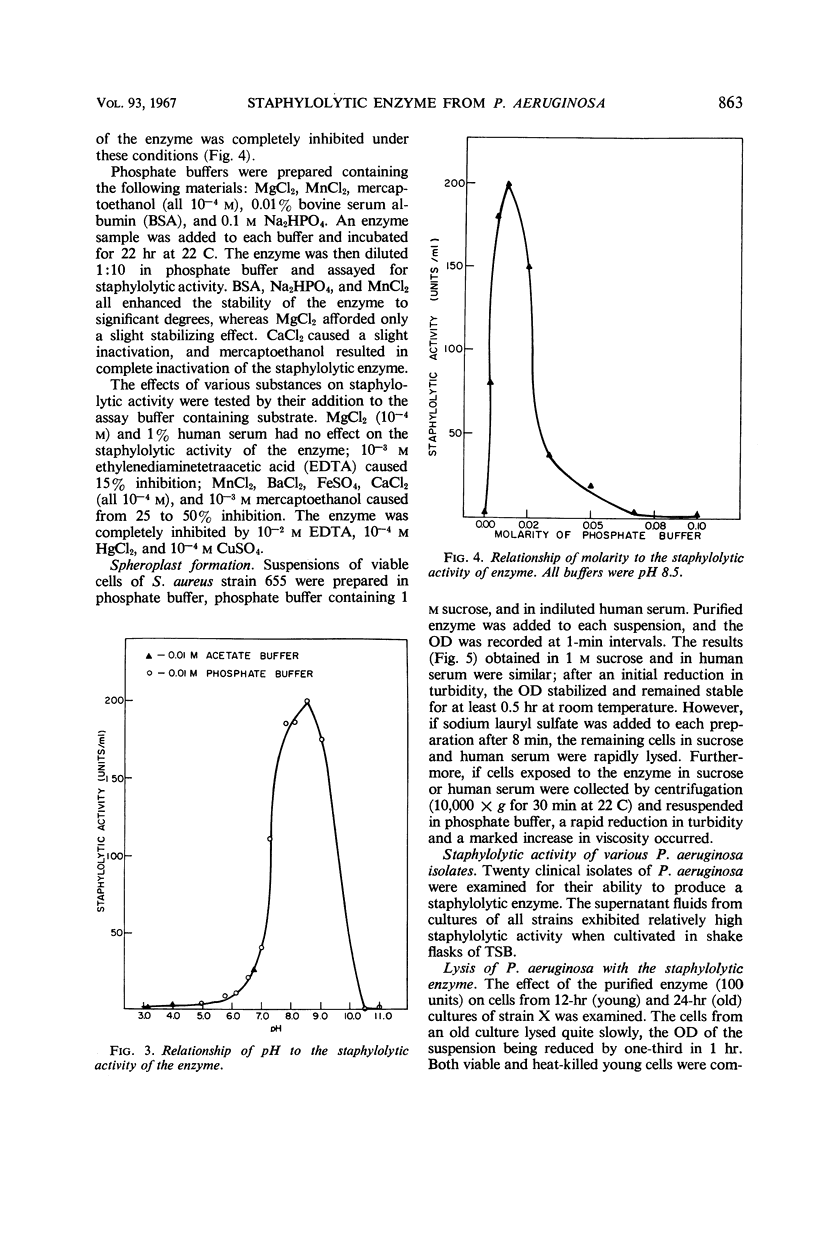
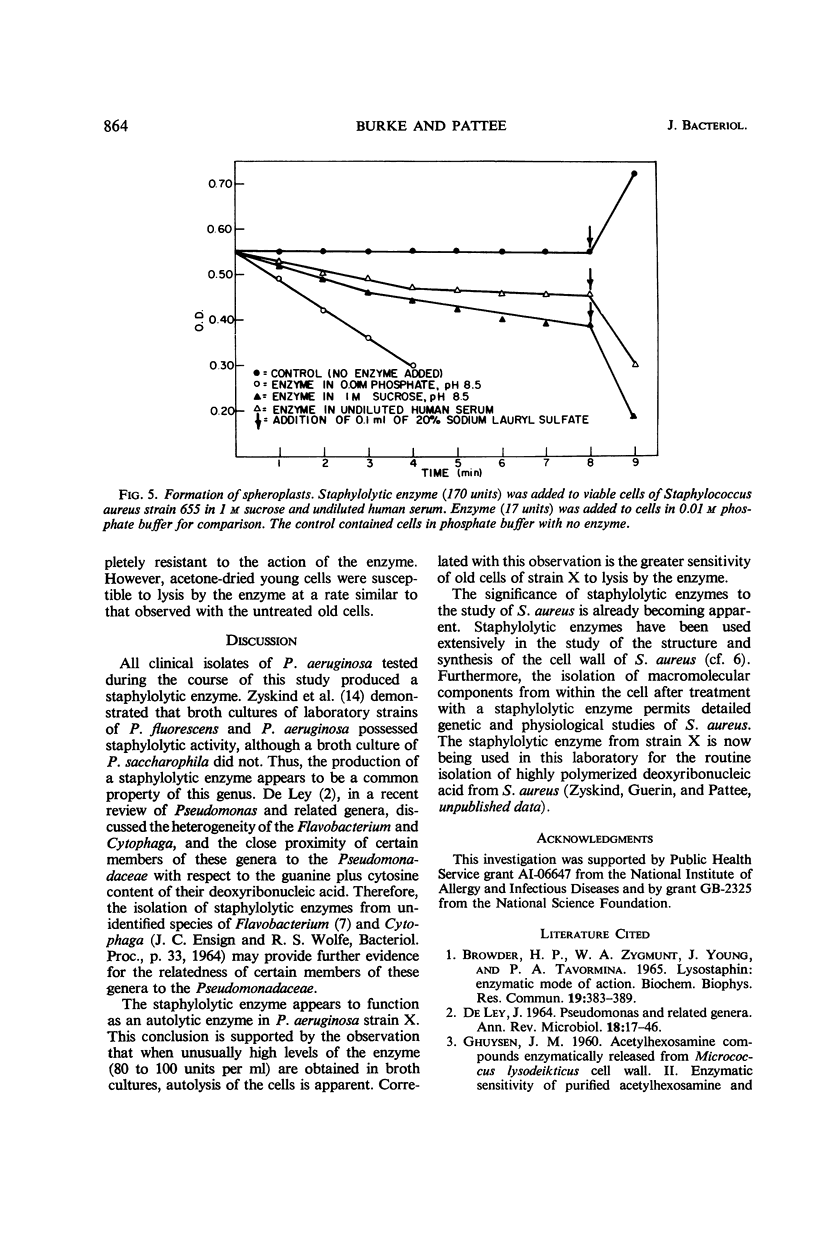
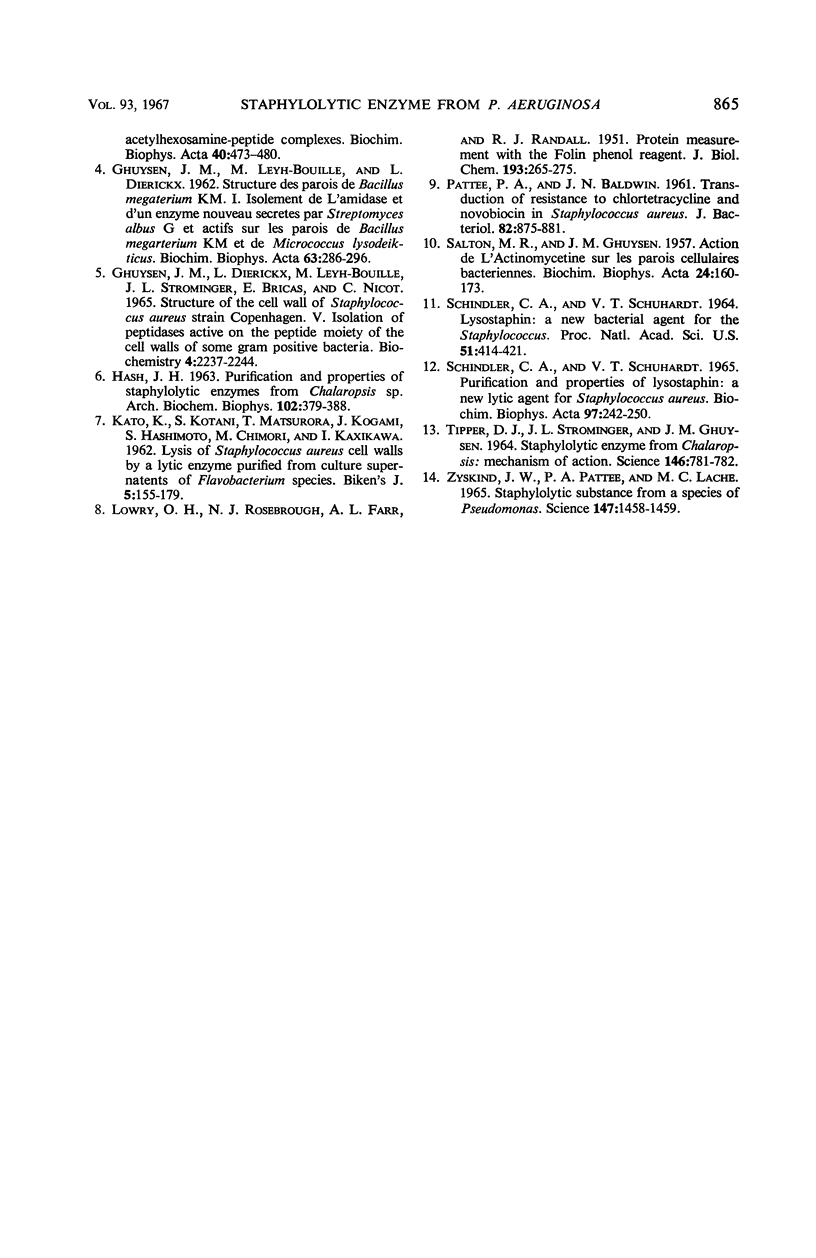
Selected References
These references are in PubMed. This may not be the complete list of references from this article.
- BROWDER H. P., ZYGMUNT W. A., YOUNG J. R., TAVORMINA P. A. LYSOSTAPHIN: ENZYMATIC MODE OF ACTION. Biochem Biophys Res Commun. 1965 Apr 23;19:383–389. doi: 10.1016/0006-291x(65)90473-0. [DOI] [PubMed] [Google Scholar]
- DELEY J. PSEUDOMONAS AND RELATED GENERA. Annu Rev Microbiol. 1964;18:17–46. doi: 10.1146/annurev.mi.18.100164.000313. [DOI] [PubMed] [Google Scholar]
- GHUYSEN J. M. Acetylhexosamine compounds enzymically released from Micrococcus lysodeikticus cell walls. II. Enzymic sensitivity of purified acetylhexosamine and acetylhexosamine-peptide complexes. Biochim Biophys Acta. 1960 Jun 3;40:473–480. doi: 10.1016/0006-3002(60)91388-3. [DOI] [PubMed] [Google Scholar]
- HASH J. H. PURIFICATION AND PROPERTIES OF STAPHYLOLYTIC ENZYMES FROM CHALAROPSIS SP. Arch Biochem Biophys. 1963 Sep;102:379–388. doi: 10.1016/0003-9861(63)90245-5. [DOI] [PubMed] [Google Scholar]
- LOWRY O. H., ROSEBROUGH N. J., FARR A. L., RANDALL R. J. Protein measurement with the Folin phenol reagent. J Biol Chem. 1951 Nov;193(1):265–275. [PubMed] [Google Scholar]
- PATTEE P. A., BALDWIN J. N. Transduction of resistance to chlortetracycline and novobiocin in Staphylococcus aureus. J Bacteriol. 1961 Dec;82:875–881. doi: 10.1128/jb.82.6.875-881.1961. [DOI] [PMC free article] [PubMed] [Google Scholar]
- SALTON M. R., GHUYSEN J. M. Action de l'actinomycetine sur les parois cellulaires bacteriennes. Biochim Biophys Acta. 1957 Apr;24(1):160–173. doi: 10.1016/0006-3002(57)90159-2. [DOI] [PubMed] [Google Scholar]
- SCHINDLER C. A., SCHUHARDT V. T. LYSOSTAPHIN: A NEW BACTERIOLYTIC AGENT FOR THE STAPHYLOCOCCUS. Proc Natl Acad Sci U S A. 1964 Mar;51:414–421. doi: 10.1073/pnas.51.3.414. [DOI] [PMC free article] [PubMed] [Google Scholar]
- SCHINDLER C. A., SCHUHARDT V. T. PURIFICATION AND PROPERTIES OF LYSOSTAPHIN--A LYTIC AGENT FOR STAPHYLOCOCCUS AUREUS. Biochim Biophys Acta. 1965 Feb 15;97:242–250. doi: 10.1016/0304-4165(65)90088-7. [DOI] [PubMed] [Google Scholar]
- TIPPER D. J., STROMINGER J. L., GHUYSEN J. M. STAPHYLOLYTIC ENZYME FROM CHALAROPSIS: MECHANISM OF ACTION. Science. 1964 Nov 6;146(3645):781–782. doi: 10.1126/science.146.3645.781. [DOI] [PubMed] [Google Scholar]
- ZYSKIND J. W., PATTEE P. A., LACHE M. STAPHYLOLYTIC SUBSTANCE FROM A SPECIES OF PSEUDOMONAS. Science. 1965 Mar 19;147(3664):1458–1459. doi: 10.1126/science.147.3664.1458. [DOI] [PubMed] [Google Scholar]


